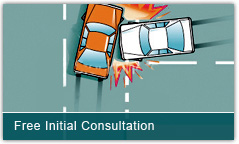Friction Testing
The determination of accurate friction is not only important for accident reconstruction purposes, but also for the evaluation of Winter Road Maintenance Programs and other policy and liability related issues investigated by our firm.
Specific to winter road maintenance issues, in 1998 Forensic Dynamics Inc. engineered and constructed an environmental chamber in which friction testing could be conducted during various environmental conditions with either a drag sled type tester or an in-house developed friction sensor. This is believed to be the only operating friction test/climate lab in use. Inside the chamber, relative humidity can be varied from 30% to 90% during temperature conditions ranging from -10°C to +15°C. Since 1998, we have completed hundreds of tests on liquid and solid anti-icing products meant to be applied to a bare roadway to prevent adhesion of ice and snow. Additionally, testing has been performed on the melting capabilities of solid de-icers in their natural form, as well as pre-wetted de-icers for colder temperature applications. The in-house friction sensor can even be utilized to test the friction provided by new experimental roadway substrates under development. As a result of our climate chamber testing capability, essentially all anti-icing chemicals in use on North American roadways are first tested in our laboratory.
For actual on-road friction testing, we utilize the Accelerex Accelerometer, which can easily be mounted to any test vehicle and used to determine the deceleration values, and hence the friction, at any roadway location. Additionally of course, the Accelerex can also be used for acceleration conditions, or to examine rapid changes in acceleration rates, called "jerk", which can cause pedestrian falls in transit vehicles such as buses, trains, etc. We have completed numerous studies for public transit companies on their buses and electric mono-rail trains, commenting on their acceleration and braking behaviours with respect to public use of these methods of transportation.





